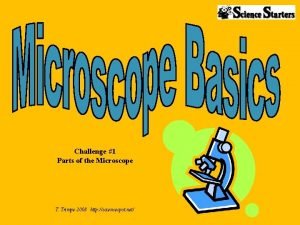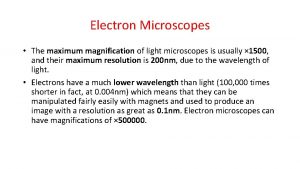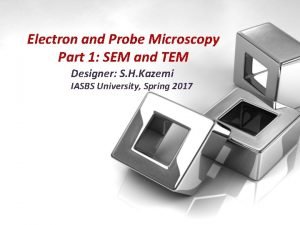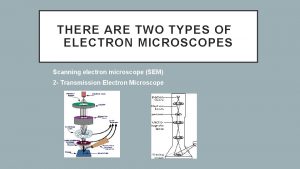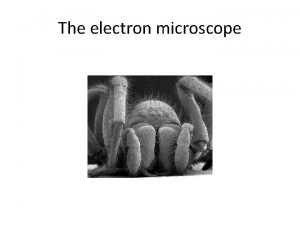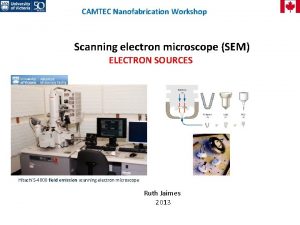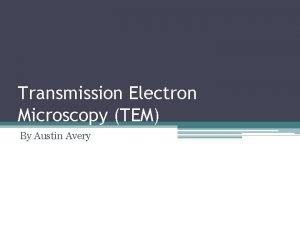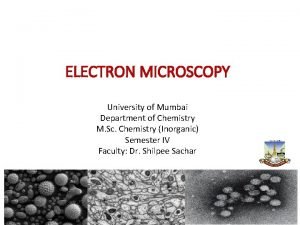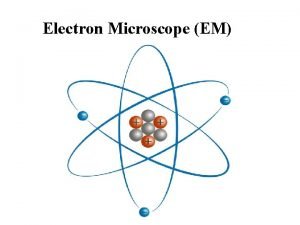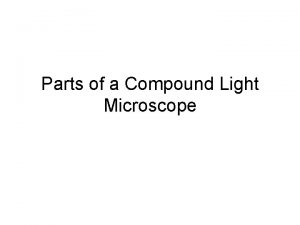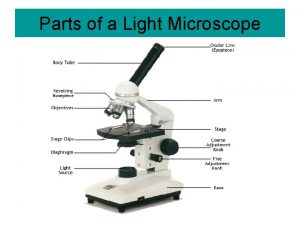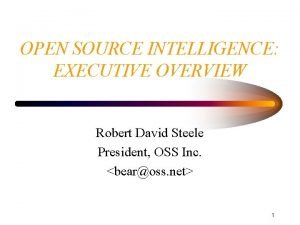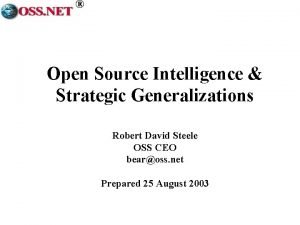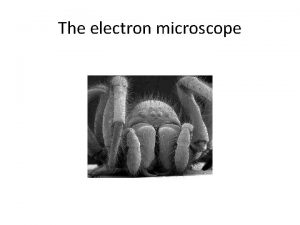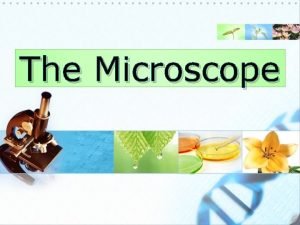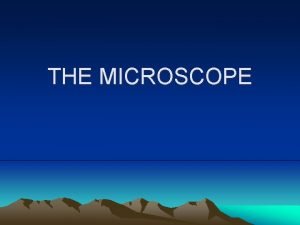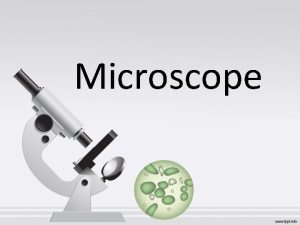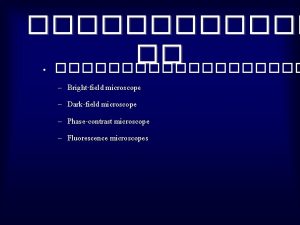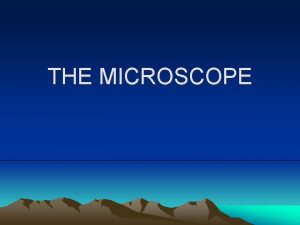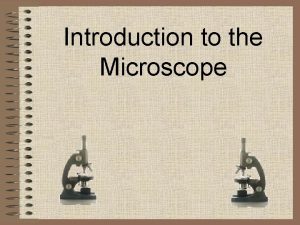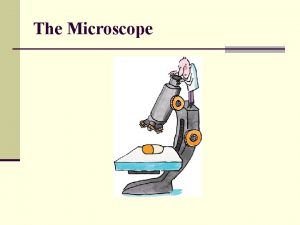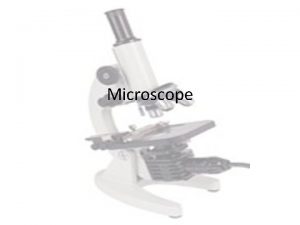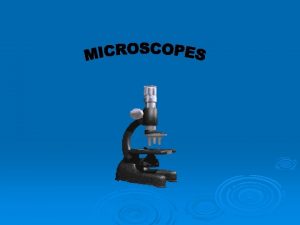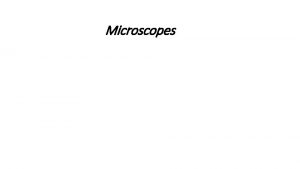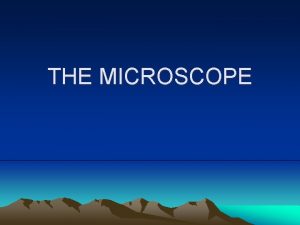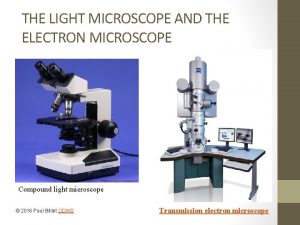Electron Microscope Sarah David Jhann The electron source


















- Slides: 18

Electron Microscope Sarah, David, Jóhann

The electron source • Thermionic emission – Wolfram – La. B 6 [Ce. B 6 can be used instead] • Field emission – Cold Field – Schottky

Thermionic emission •

Field emission • The emission of electrons induced by an electrostatic field • The theory is described approximately by the Fowler-Nordheim equations, which strictly speaking apply only to field emissions from bulk metals. • A prime example of electron tunneling

Field emission, cont. • In order to function properly at ambient temperatures, the surface must be contamination and oxide free – this is achieved by operating under high vacuum conditions (<10 -11 Torr) – called cold field emission. • A poorer vacuum can be used by heating the tip, and thermal energy also assists in electron emission.

• In these cases, the surface is covered with Zr. O to improve the emission characteristics. • These Zr. O coated electron guns are called Schottky emitters.

Electron-beam lithography • Using a focused beam of electrons to draw custom shapes on an electron sensitive film. [“exposing”] • This changes the solubility of the affected area, enabling selective removal of either the exposed or non-exposed areas by solvent immersion. [“developing”] • Primary advantage of e-beam lithography is the custom pattern with <10 nm resolution, although due to its low throughput, usage is limited.

Electron Sources • Thermionic sources are sufficient when high resolution is not required. • When it is, field electron emission sources are preferred due to their lower energy spread and enhanced brightness. • Within the field emissions, thermal assisted is preferred over cold, despite the former’s slightly larger beam size, due to greater stability over long periods of time.

Throughput •

Throughput, example •

Quantitative Analysis In order to do quantitative analysis, the surface of the material being measured must be flat. X-rays must travel through the material above them in order to be detectable – the greater the distance, the more of an effect this has on the energy. In order for this effect to be consistent, the distance traveled through the material must remain constant – which is achieved by having a flat surface.

Qualitative Analysis • The detector for the X-rays involves the use of a silicon crystal. • The photons hit the crystal, releasing electrons which are then counted. • Counting these electrons takes time, which means there is a speed vs. accuracy tradeoff.

Qualitative Analysis, cont. • The spectra are a combination of two things – the characteristic peaks used for identifying elements, and the continuous background spectra, which ranges from zero up to the beam voltage. • The background radiation is a result of the deceleration of beam electrons as they travel through the material.





2 D representation of chemical composition along a line
 Difference between light microscope and electron microscope
Difference between light microscope and electron microscope Microscope mania compound light microscope
Microscope mania compound light microscope Animal cell under electron microscope
Animal cell under electron microscope Maximum magnification of electron microscope
Maximum magnification of electron microscope Sem vs tem
Sem vs tem Types of electron microscope
Types of electron microscope Electron microscope
Electron microscope Scanning electron microscope main idea
Scanning electron microscope main idea Electron microscope drawing
Electron microscope drawing Uses of electron microscope
Uses of electron microscope Electron microscope
Electron microscope Parts of electron microscope
Parts of electron microscope Components of tem
Components of tem Function of light switch in compound microscope
Function of light switch in compound microscope What are the parts of a light microscope
What are the parts of a light microscope Nato open source intelligence handbook
Nato open source intelligence handbook Robert david steele open source intelligence
Robert david steele open source intelligence Hình ảnh bộ gõ cơ thể búng tay
Hình ảnh bộ gõ cơ thể búng tay Slidetodoc
Slidetodoc

